The United Nations Educational, Scientific, and Cultural Organization, abbreviated as UNESCO, is a special subsidiary organization of the United Nations. Its activities are aimed to improve international cooperation in education, culture, and science in order to increase international peace and welfare.
The development of sustainable tourism is one of the most important goals of UNESCO, which is being pursued by introducing the most remarkable cultural attractions in each country. This goal involves identifying and choosing the best tangible and intangible heritages of each country through a certain process, realizing their natural, cultural, or historical significance, and eventually publishing the results in two separate lists.
Every modern civilization has inherited a set of cultural values and monuments that date back far into history. These cultural values include national traditions and customs, skills and industries, arts, literature, beliefs, etc. and are categorized as UNESCO Intangible Cultural Heritage. The other category, UNESCO World Heritage Sites, consists of monuments, structures, ancient sites, and also natural attractions.
UNESCO World Heritage Sites
UNESCO World Heritage sites are a group of culturally or naturally significant places registered by UNESCO. These sites include mountains, deserts, lakes, monuments, complexes, and cities and are chosen by the UNESCO World Heritage committee based on predetermined criteria and procedure.
According to the World Heritage Convention, all of the sites included in the UNESCO World Heritage Sites list belong to all mankind regardless of race, religion, or nationality. Therefore, governments are responsible for their preservation.
UNESCO World Heritage Sites Selection Criteria
Outstanding sites around the world must meet at least one out of ten selection criteria determined by UNESCO in order to be eligible for nomination by the country in which they are. For the selection process to begin, each country has to surrender a list of potential sites to UNESCO and select one of them to be a UNESCO World Heritage site based on accurate documents and files. Afterward, the UNESCO World Heritage Committee will make the final decision by voting.

Iran UNESCO World Heritage Sites
Iran UNESCO World Heritage sites list currently consists of 24 cultural and natural sites, 22 of which are cultural ones. There are also 56 Iran attractions on the UNESCO Tentative Sites list.
Moreover, UNESCO has published a similar list with the title of UNESCO Intangible Cultural Heritage. This list includes attractions of cultural value such as music, art, dance, cuisine, handicrafts, and festivals that can be recorded but not limited to a physical place such as a museum. However, they can be experienced through equipment and instruments used for them.
Iran currently has 14 items on the UNESCO Intangible Cultural Heritage list.
Note that this list will be updated over time.

Iran UNESCO World Heritage Sites
Keep reading as we introduce Iran UNESCO World Heritage Sites:
Armenian Monastic Ensembles of Iran
The Armenian Monastic Ensembles of Iran consists of three historical monuments located in East and West Azerbaijan provinces in Iran. The monuments are Saint Thaddeus Cathedral, Monastery of Saint Stepanos, and the Chapel of Dzordzo. They were built between the 7th and 14th century and each has features that make them significant to the Armenians living in Iran.
-
Saint Thaddeus Cathedral
Initially known as Kara Cathedral, Saint Thaddeus Cathedral was built over the tomb of Thaddeus during the primary years A.D. It suffered severe damages due to the Mongol invasion of Iran; however, it was reconstructed by Nasir al-Din al-Tusi.
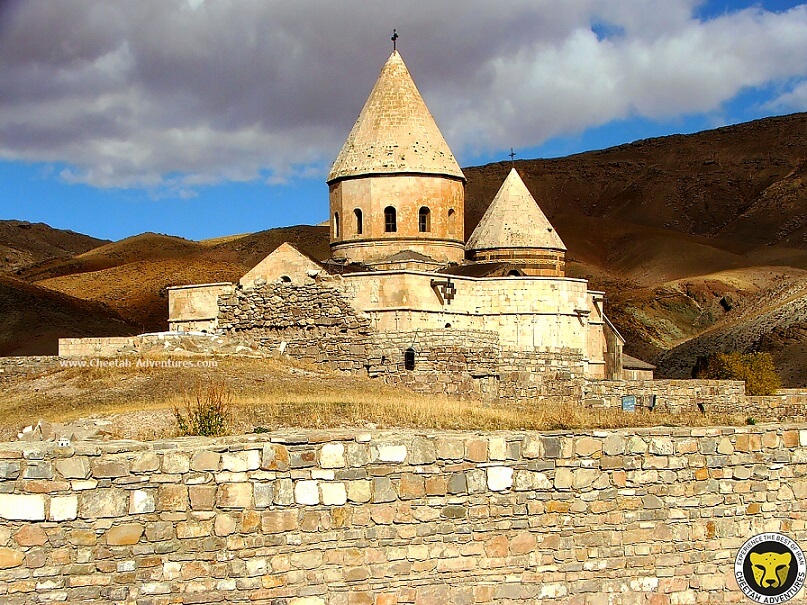
Saint Thaddeus Cathedral
-
Monastery of Saint Stepanos
Dating back to sometime between the 10th and 12th centuries, the Monastery of Saint Stepanos is the second-largest Armenian church in Iran. It’s widely known for its outstanding architecture.
The architecture style used in this historic monastery is a combination of Iranian and Romanian architecture styles that was later known as the Armenian architecture style. The Monastery of Saint Stepanos is believed to be the burial place of Saint John.
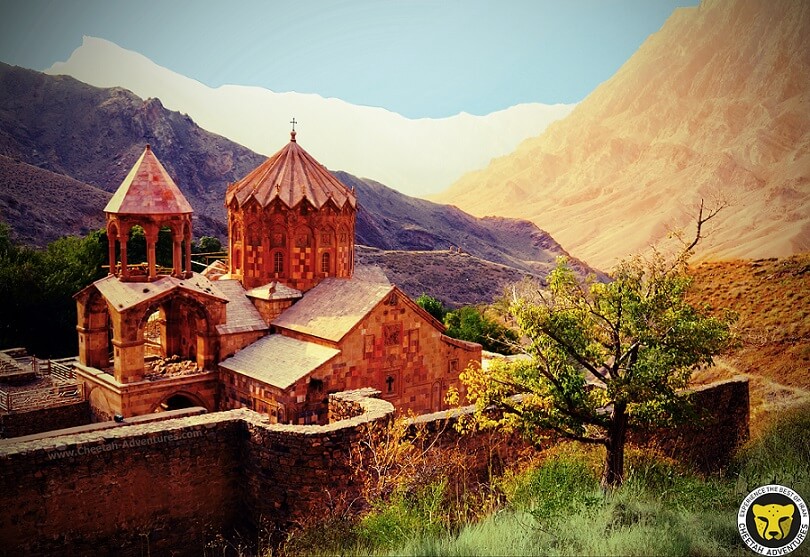
Monastery of Saint Stepanos
-
Chapel of Dzordzo
The Chapel of Dzordzo is one of the UNESCO World Heritage Sites in Iran. It was constructed in 1315 by the archbishop of Saint Thaddeus Cathedral. The Chapel of Dzordo is the venue for an annual gathering of Armenians in June.
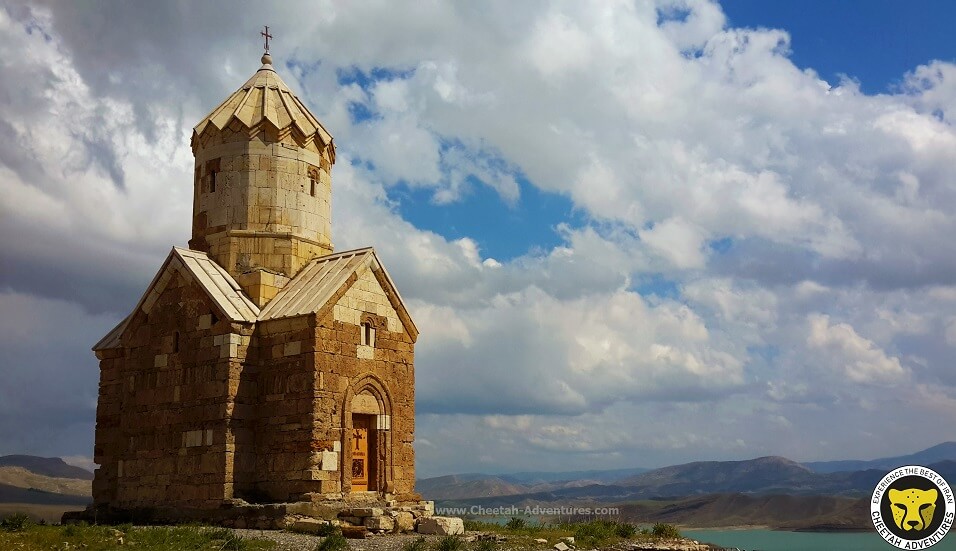
Chapel of Dzordzo
Bam and its Cultural Landscape
Arg-e Bam is the largest structure in the world made out of mudbricks. This grand citadel is located at the center of a fortress however; the whole structure is known as Bam citadel due to its significance.
There is no accurate time marking the construction of this amazing citadel however; some archeologists estimate the time to be around the Achaemenid era. Arg-e Bam suffered severe damages due to the earthquake in 2003 but a large part of it has been reconstructed ever since.
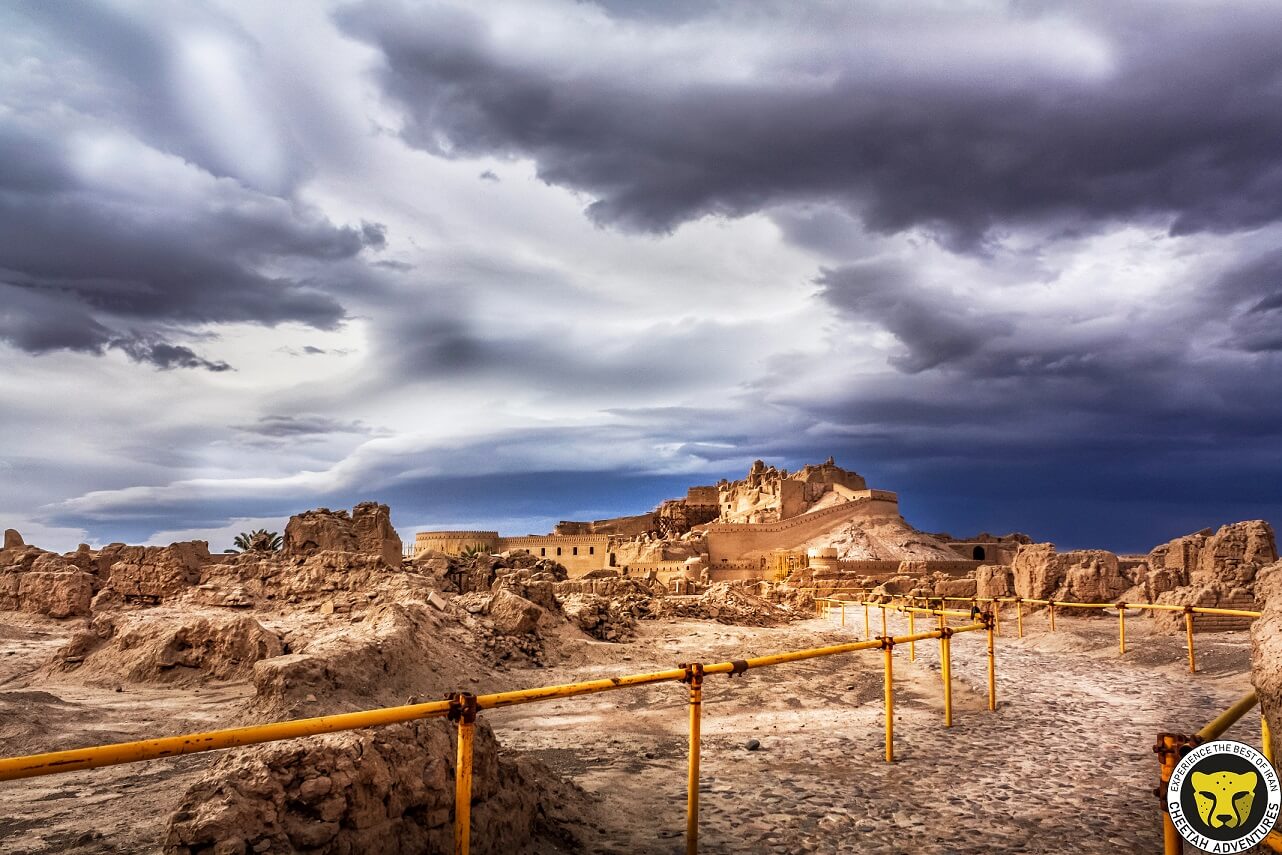
Bam and its cultural landscape, Kerman
Bisotoun (Bisotun)
Bisotoun is a rock relief and inscription located near Kermanshah, Iran. This ancient monument dates back to 522 BC. The script is associated with Darius the Great, one of the most popular and noble emperors of the Achaemenid dynasty. The valuable script of Bisotoun is the oldest script in Iran and the largest one in the world.
Bisotoun is one of the most significant and outstanding attractions left from the Achaemenid dynasty. Furthermore, evidence found in nearby monuments suggests that civilizations have settled in Bisotoun since the Paleolithic era.
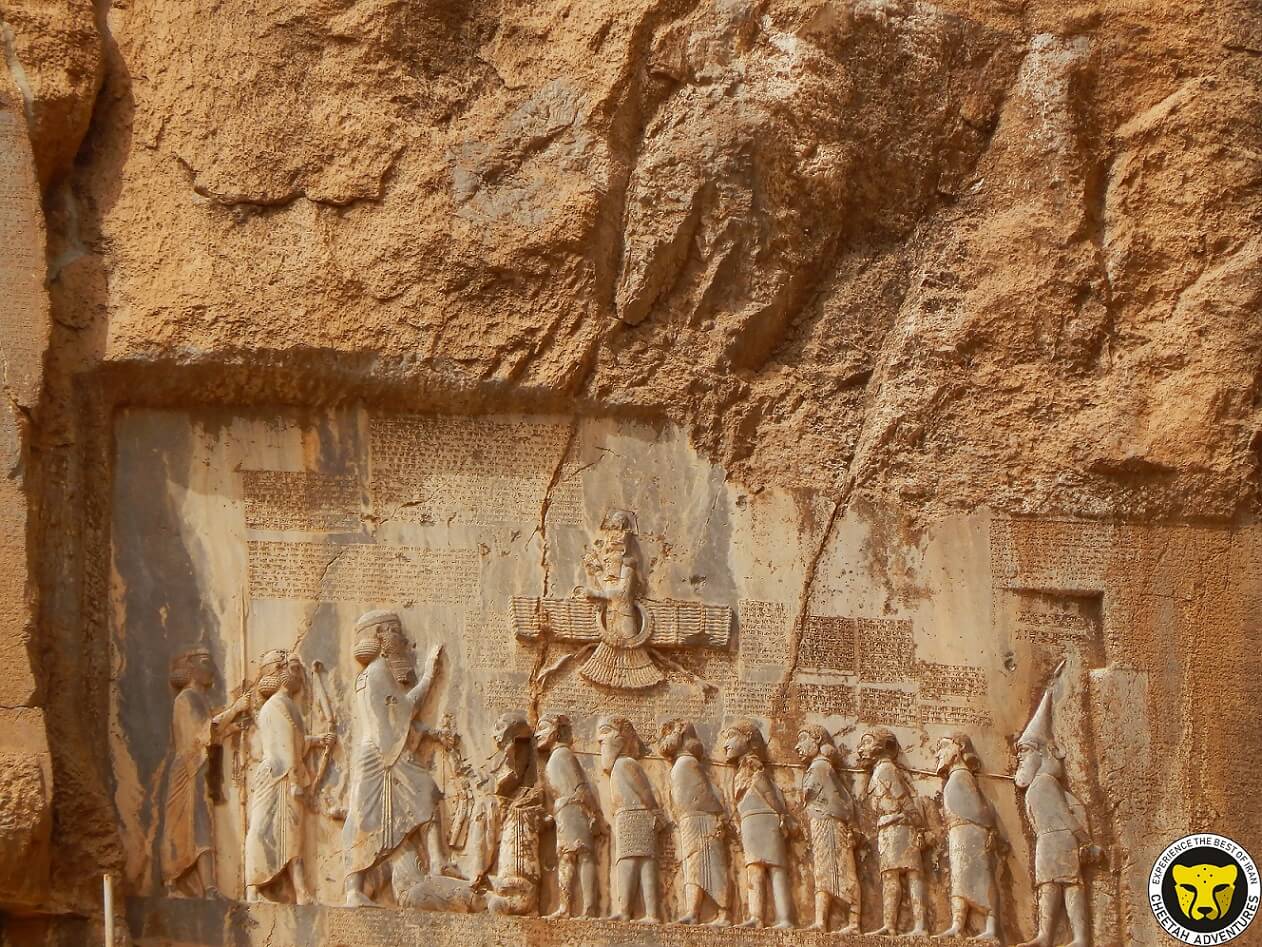
Bisotun, Kermanshah
Cultural Landscape of Maymand
Maymand village, also known as the Cultural Landscape of Maymand, is one of the most unique and ancient villages in Iran. This fascinating village is estimated to be built by the Aryans, making it almost 12000 years old.
The hand-carved houses of this village raise every visitor’s praise. The shape of these houses keeps the inside temperature cool during summer and hot during winter.
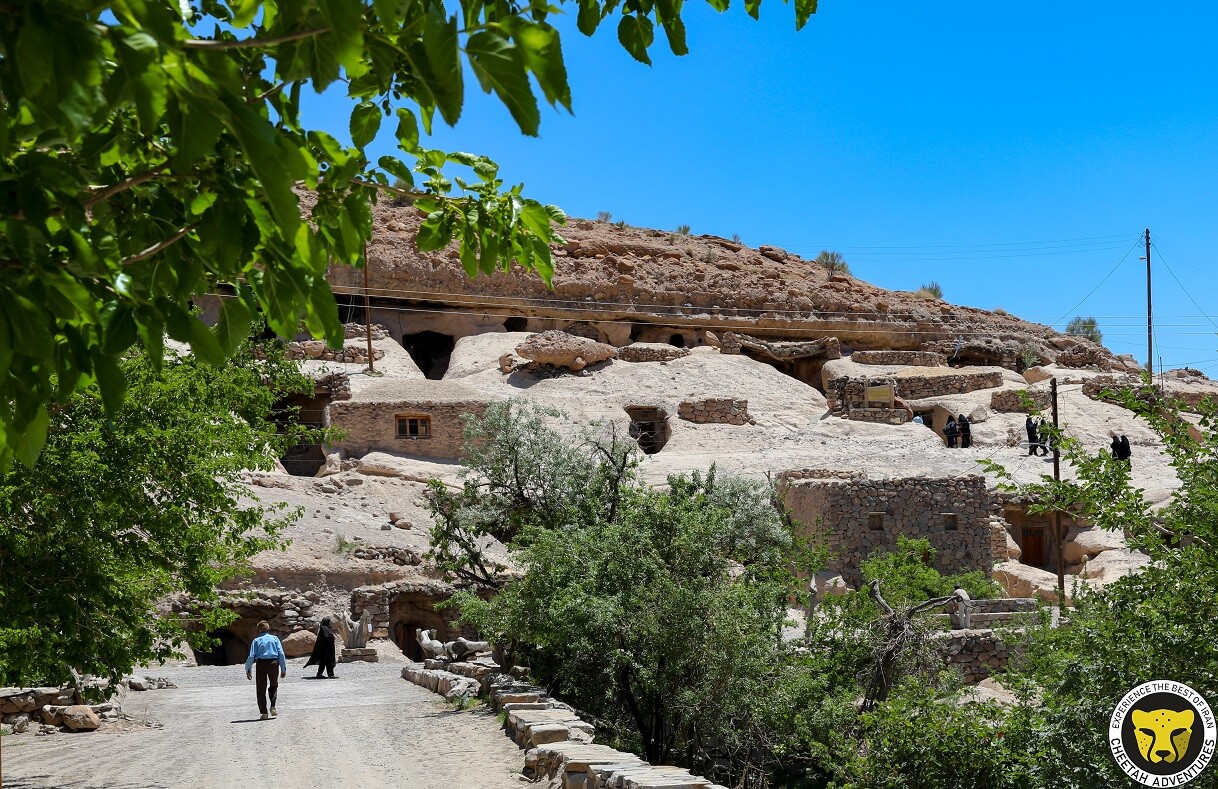
Cultural Landscape of Maymand, Kerman
Golestan Palace
Located in Tehran, This beautiful palace was built during the Safavid era and completed during the Qajar era. It was the official residence of the Qajar rulers and the summer home of Pahlavi rulers. The magnificent decorations and architecture of this UNESCO world heritage site were inspired by European palaces.
Golestan Palace is the epitome of the evolution of Iranian architecture. Now a museum, this historical palace has several smaller museums inside it and is also the second repository of old photos and films in the world after the British Museum.

Golestan Palace, Tehran
Gonbad e Qabus (Gonbad Kavus)
Constructed around the year 900, Gonbad-e Qabus is one of the most ancient towers in Iran. This tower is located in a city of the same name at Golestan province. This UNESCO World Heritage Site used to serve for navigation because of the fire lit on the top. It’s also a tomb and a very valuable monument left from the 10th century.
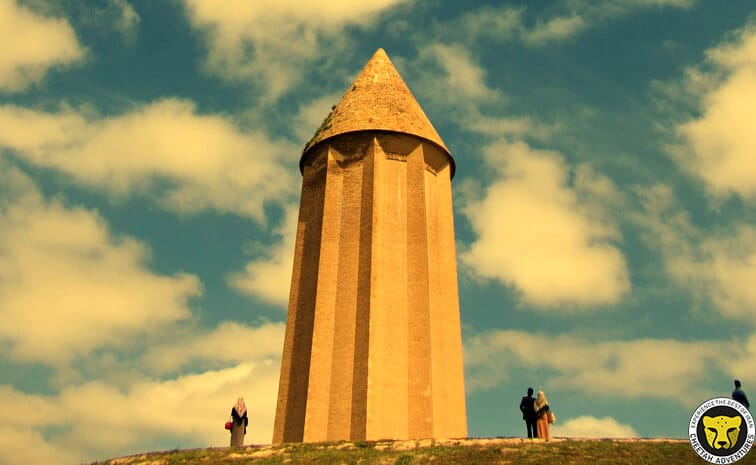
Gonbad e Qabus (Gonbad Kavus), Golestan
Historic City of Yazd
Yazd is known as the city of wind towers. This amazing city is popular for its Persian Qanats, brilliant desert-style architecture, and kind people. It’s also the birthplace of the Zoroastrian religion and Zoorkhaneh sport. Yazd is one of the most charming Iran tourist destinations with its ancient houses and traditional structure.
The old neighborhood of the city, called Fahadan, amazes travelers with its unique architecture, narrow alleyways, and traditional houses. The Historic City of Yazd is a UNESCO World Heritage Site and a must-see in Iran.
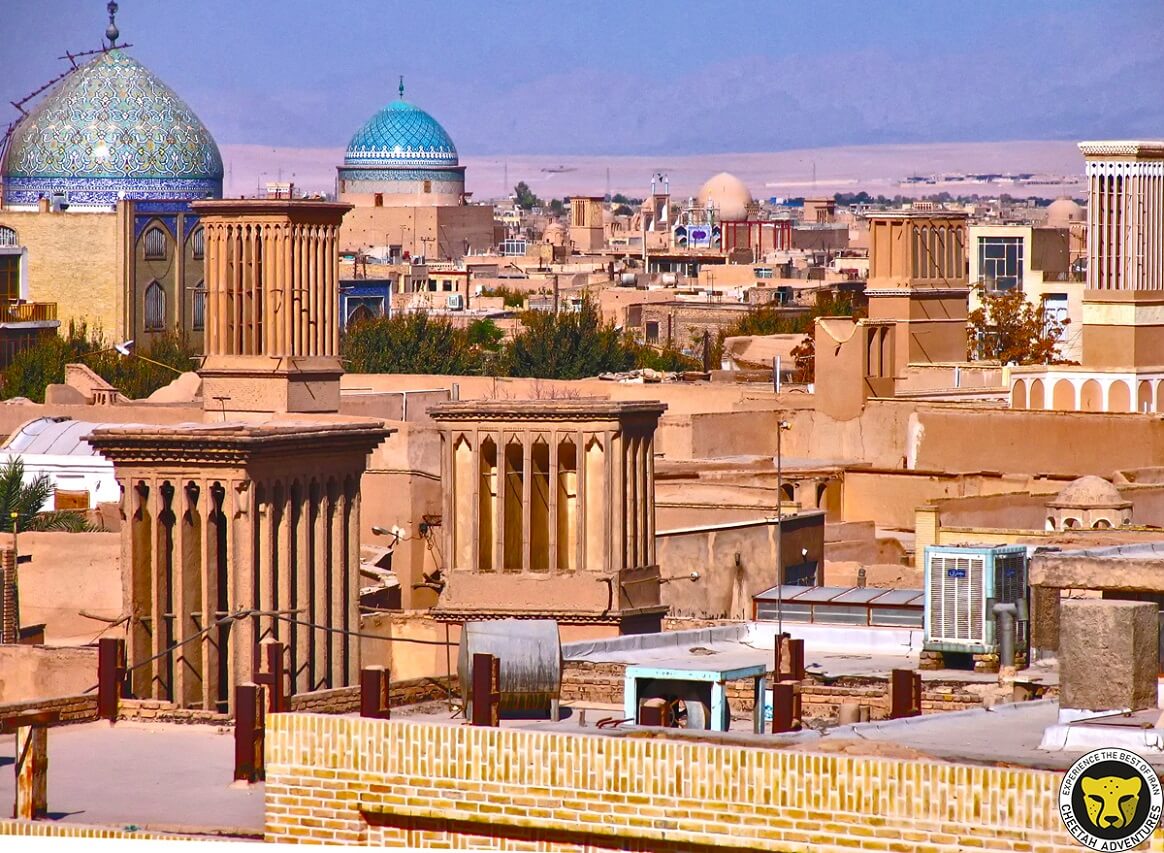
Historic City of Yazd
Masjed-e Jameh of Isfahan
The grand Masjed-e Jameh of Isfahan, also known as Masjed-e Atiq, is one of the oldest and most important religious structures in Iran. The original mosque was built in the 9th century in Isfahan; however, some parts have been rebuilt and the mosque has expanded ever since. The impressive Jameh Mosque of Isfahan (Masjed-e Jameh) is the best place for observing different architectural styles and fascinating decorations that Iranian mosques are famous for.
In addition, the ancient epigraphs and the stucco work of the Mihrab belonging to the Ilkhanate era are some of its significant features.
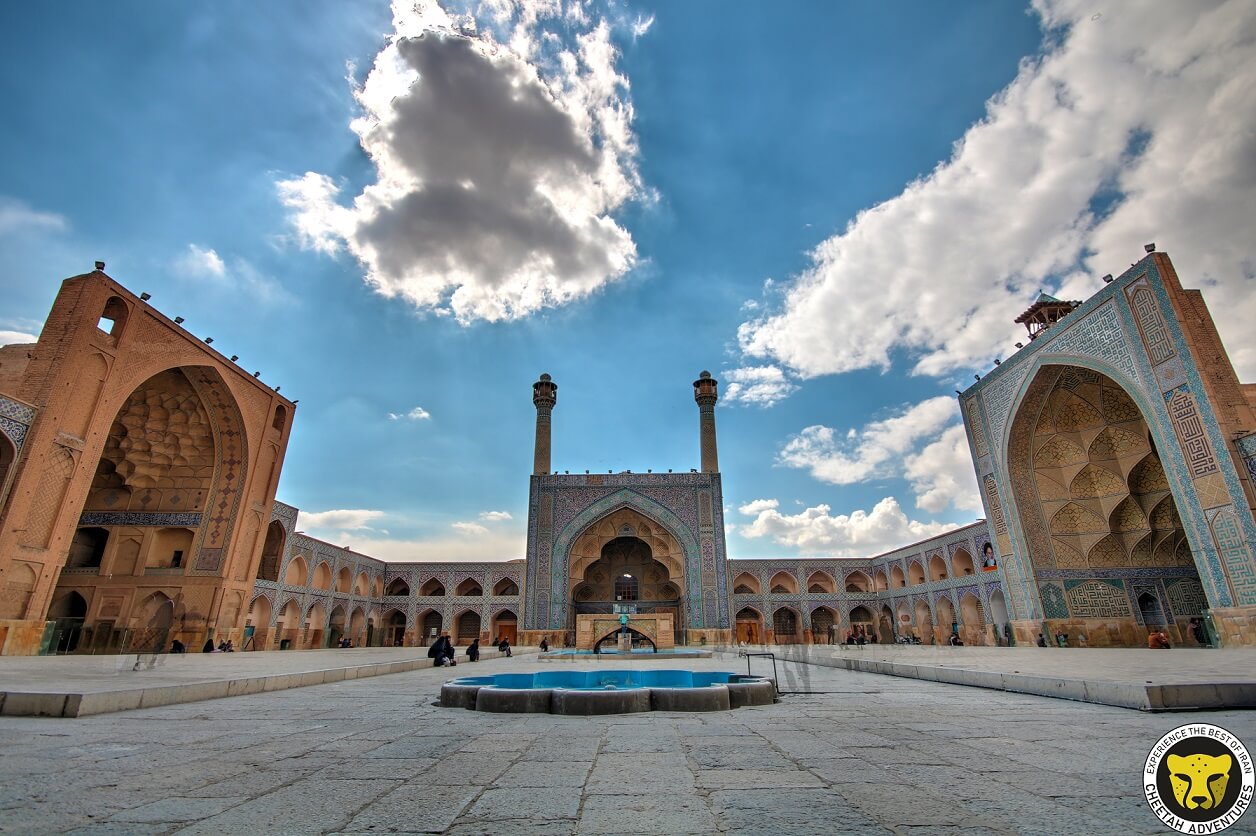
Masjed-e Jameh of Isfahan
Meidan Emam (Naqsh-e Jahan Square)
Naqsh e Jahan is the most famous landmark of Isfahan. Naqsh-e Jahan is the second biggest square in the world. This former polo field was built during the Safavid dynasty and is surrounded by 3 amazing monuments and a traditional Bazaar. Taking photos and riding in carriages are other available activities in this square besides visiting monuments.
There are three significant historical attractions surrounding Naqsh-e Jahan Square
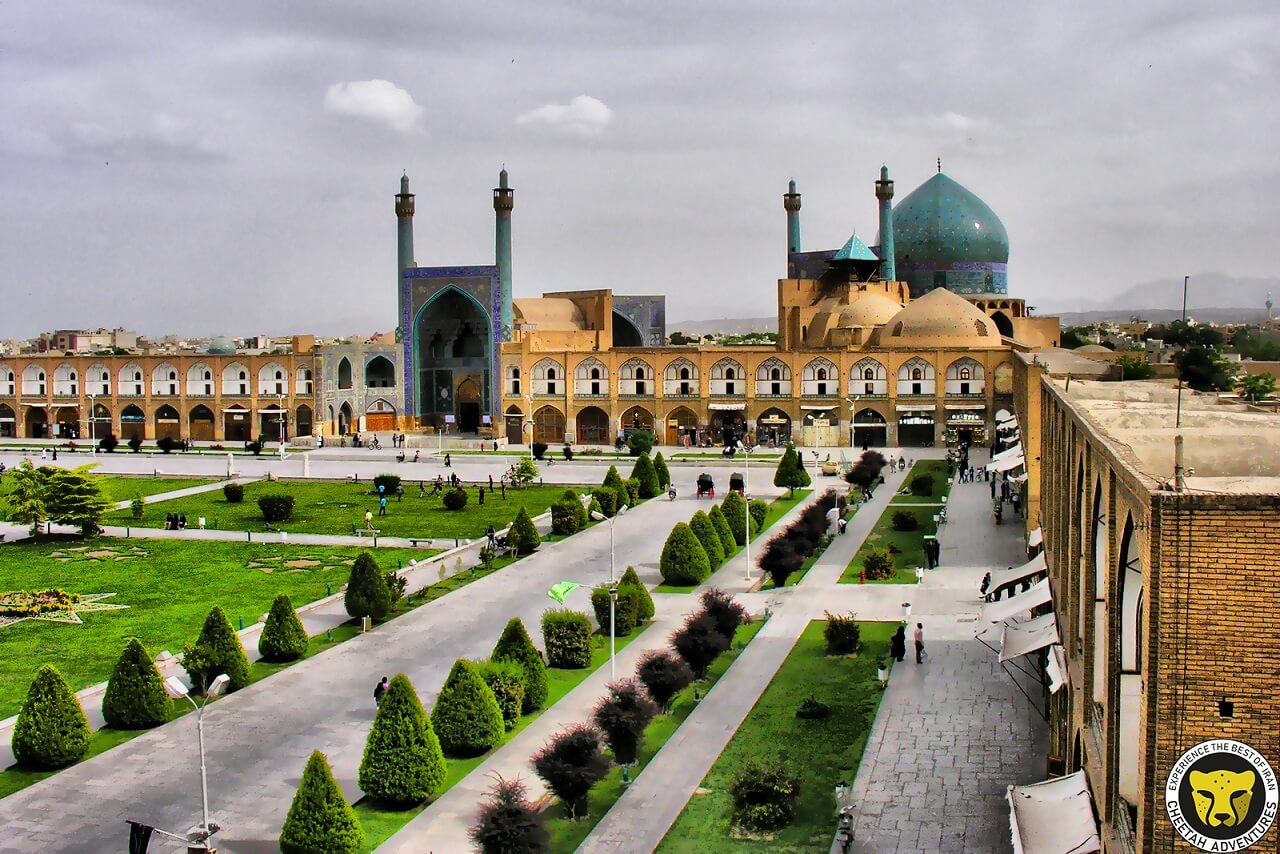
Meidan Emam (Naqsh-e Jahan Square) Isfahan
-
Ali Qapu Palace
This stunning palace was the official residence of the rulers of the Safavid dynasty. This lavish palace has 6 stories all of which are emblazoned with frescos, mirrors, and stucco.
The unique acoustic room on the 6th floor is the most significant part of the palace. The room is meticulously designed for playing music and the stuccos on the walls and the ceiling are shaped specially to improve the quality of the sound.

Ali Qapu Palace
-
Sheikh Lotfollah Mosque
The first thing that catches your eye looking at this mosque is its great doe and the lack of minarets. Built for the king and his family during the Safavid era, Sheikh Lotfollah mosque is one of the most beautiful and unique mosques in Iran.
The stunning tile work and the lights inside evoke every traveler’s sense of admiration. No mistakes have been found in the architecture of this mosque to this day.

Sheikh Lotfollah Mosque
-
Imam (Shah) Mosque
Imam mosque is the first thing that catches the eye upon entering Naqsj-e Jahan square. This grand mosque is the most important Islamic monument in Iran. This masterpiece was built by the king in an attempt to make Naqsh-e Jahan square the most important part of the city and shows the importance of religion in the Safavid dynasty.
One of the unique features of this mosque is the amplifying effect of the area under the dome used to amplify the call for prayer.
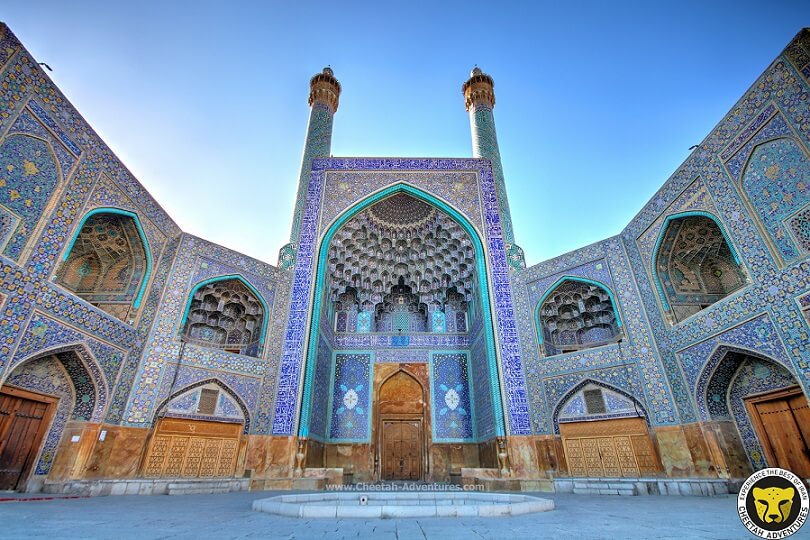
Imam (Shah) Mosque
Pasargadae
Pasargadae ruins especially the tomb of Cyrus the Great is one of the most visited monuments by Iranians. Cyrus the Great was the founder of the Achaemenid dynasty. This great leader is respected by Iranians and people all around the world for his justice, wisdom, and services to his people.
His collection of precepts carved on a cylinder known as the Cyrus Cylinder is the first known written statement about human rights.
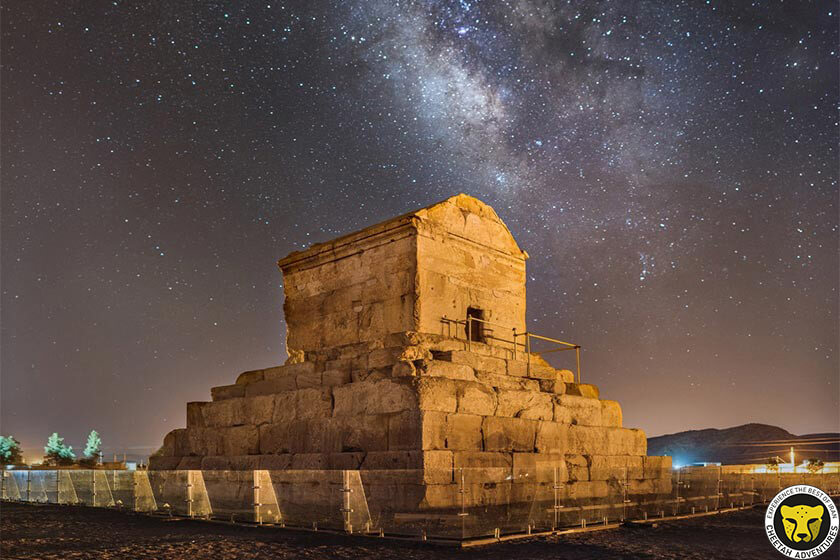
Pasargadae, Shiraz
Persepolis
The ruins of Persepolis located near Shiraz are the remains of the ceremonial capital of the Achaemenid dynasty. Originally called Parseh meaning city of Pars tribe, this city is the dazzling emblem of the grandeur and beauty of the Achaemenid Empire. For those interested in history, there is no better place than this 3000 years old site to get to know this ancient civilization.
Persepolis enchants every traveler with its grandeur, magnificent capitals, symbols, and meaningful epigraphs. Unfortunately, Alexander the Great set this masterpiece on fire in 330 B.C
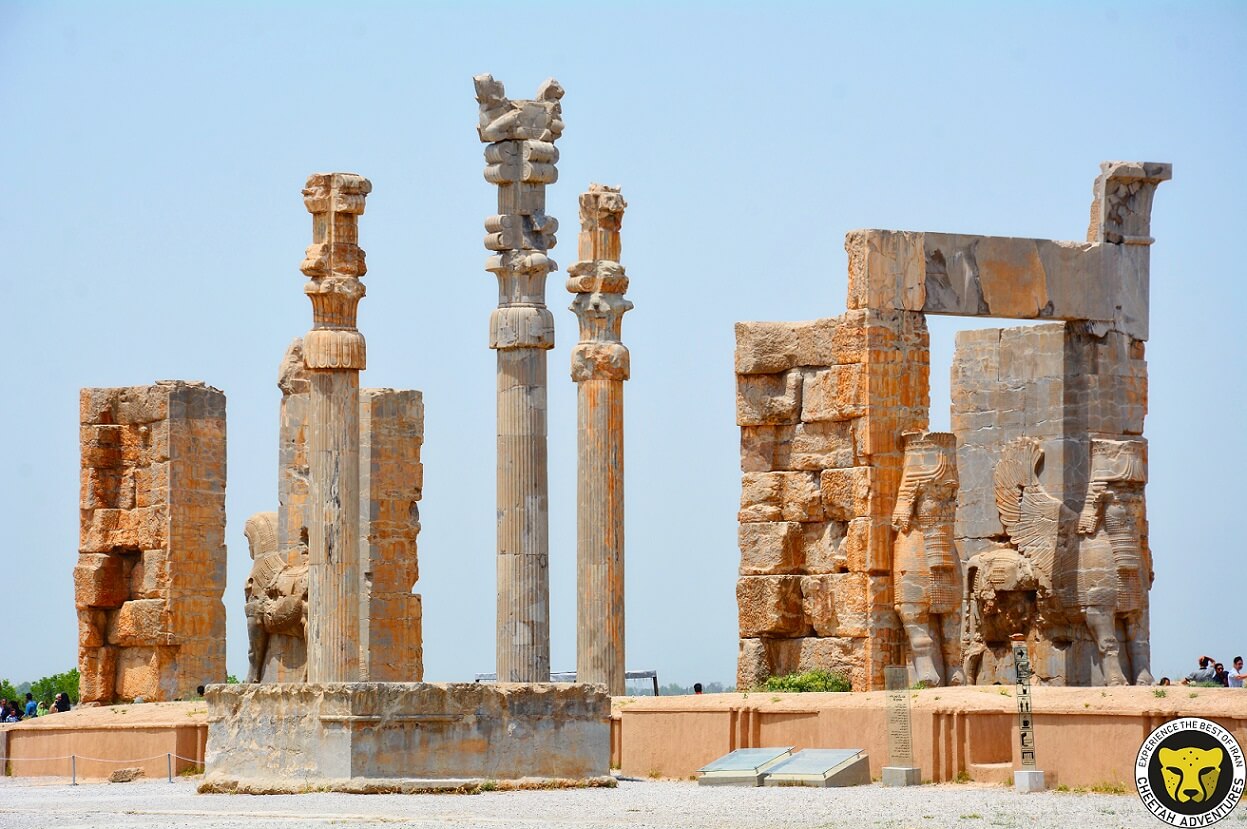
Persepolis, Shiraz
Sassanid Archeological Landscape of Fars Region
The Sassanid era was one of the most glorious and notable eras in the history of Iran. The sites and monuments left from the dynasty are considered extremely valuable by the world. Sassanid Archeological Landscape of Fars Region consists of 8 ancient monuments that date back to almost 1800 years ago. These sites are:
-
Qal’eh Dokhtar
Despite being damaged, the ruins of Qal’eh Dokhtar are still an obvious proof of the grandeur of this ancient structure. Built towards the end of the Parthian era, Qal’eh Dokhtar is the symbol of the end of their reign. This ancient castle is the epitome of the brilliance of the engineers of the time and also the first structure with a dome in Iran.
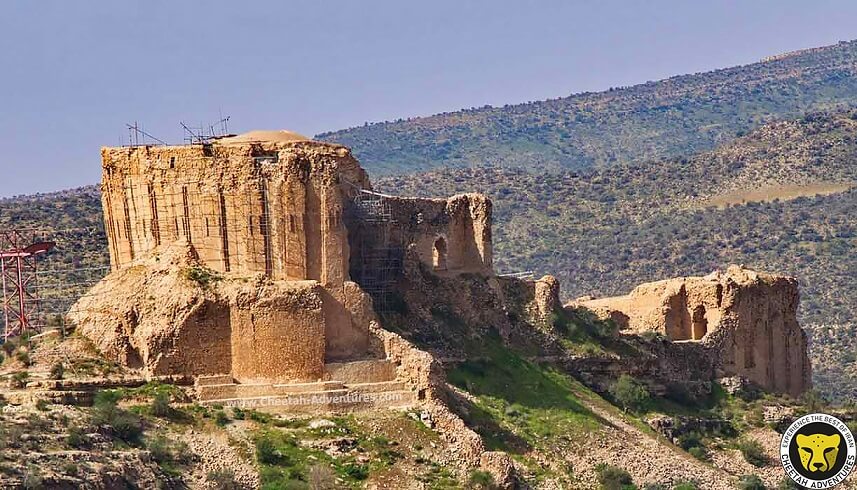
Qal’eh Dokhtar
-
Ardashir Investiture Relief and Ardashir Victory Relief
Carved around the 3rd century, Ardashir Investiture Relief illustrates the wars between The Parthians and The Persians that resulted in the establishment of the Sassanid Dynasty. The other relief is an illustration of the coronation of Ardashir I, the founder of the Sassanid Dynasty.

Ardashir Investiture Relief
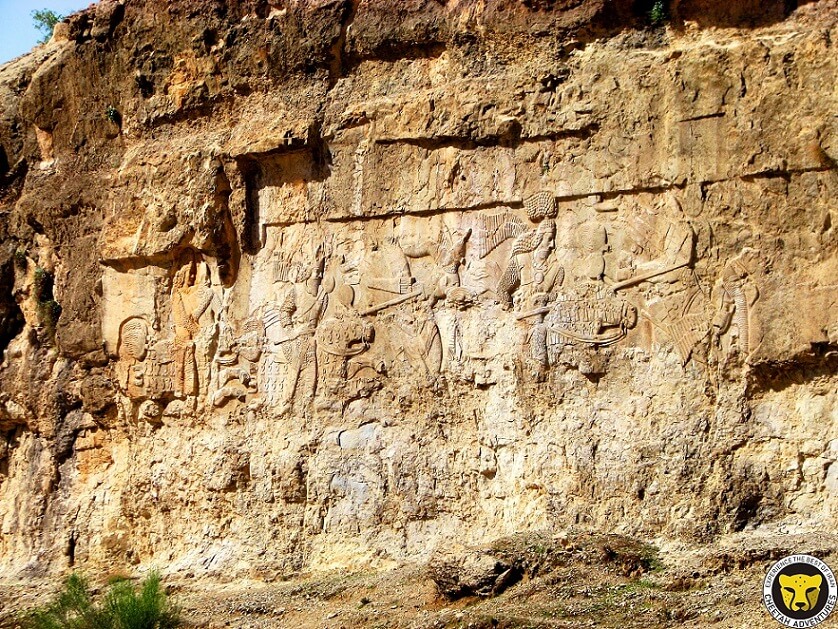
Ardashir Victory Relief
-
Ardashir Khurreh
Also known as the old Firouzabad, Ardashir Khurreh was the capital of Ardashir I after defeating the Parthians. This city was built in a circular form, typical of the era. The ruins Ardashir Khurreh include the first-ever observatory in Iran.
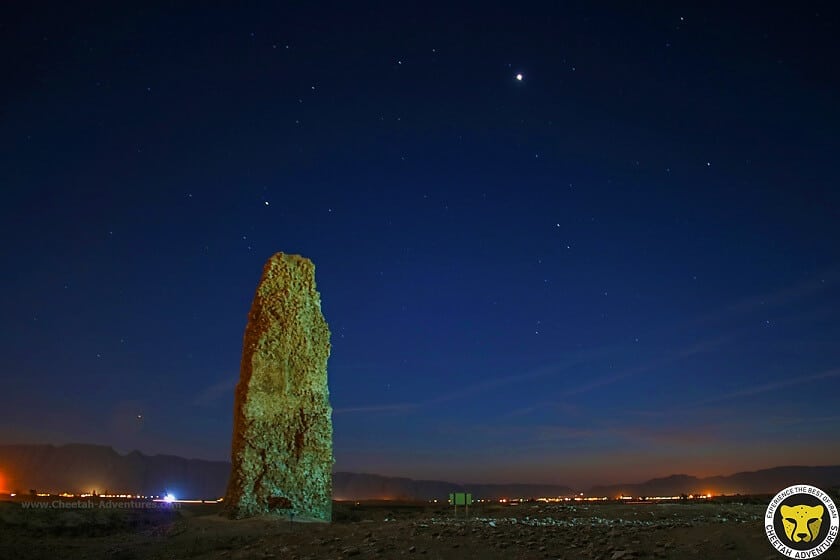
Ardashir Khurreh
-
Palace of Ardashir
The palace of Ardashir is another one of the ancient Iran attractions of the Sassanid Archeological Landscape of Fars Region. Similar to the other monuments of the group., this palace was built during the reign of Ardashir I and on his order. There are debates over the use of the Palace of Ardashir as some believe it might have been a fire temple.
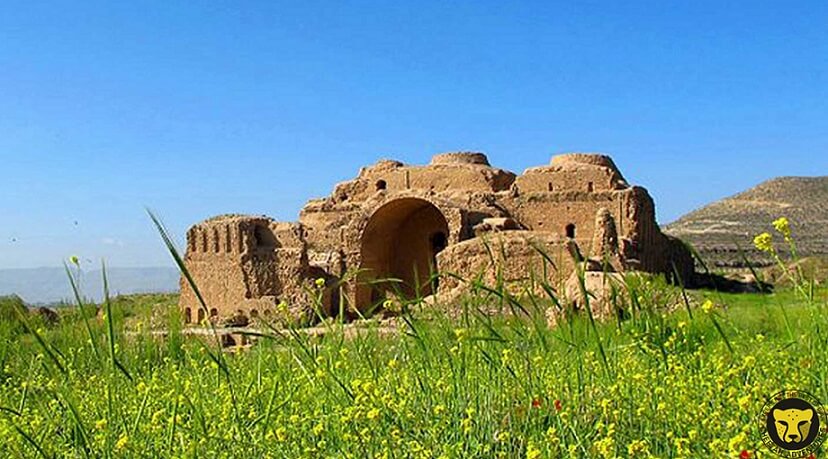
Palace of Ardashir
-
City of Bishapur
The ancient city of Bishapur was one of the largest and most important cities in Iran during the Sassanid era. It’s also one of the first cities to have an epigraph with information on its construction. There are also several rock reliefs in the ruins of Bishapur. This city is among the 8 monuments of the Sassanid Archeological Landscape of Fars Region group.
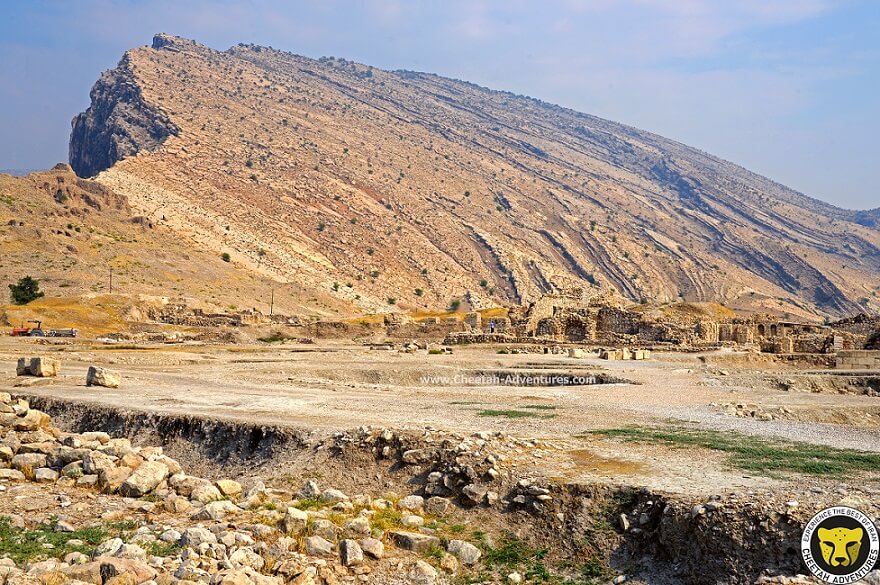
City of Bishapur
-
Shapur cave
Shapur cave is a cultural attraction in addition to a natural one. This cave gets its name from the 1700-year-old statue of Shapur I inside it. Shapur was the second Sassanid king.
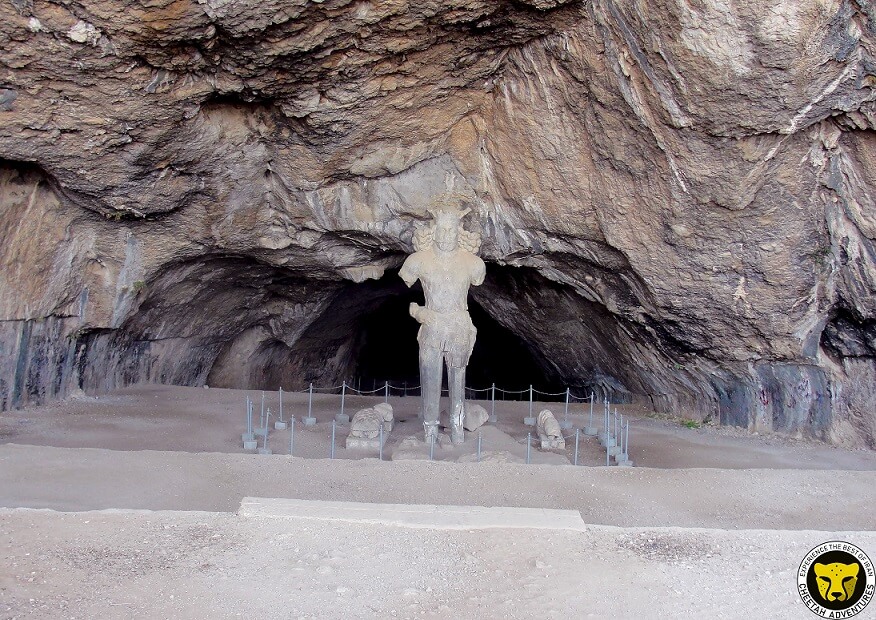
Shapur cave
-
Sarvestan Palace
Built during the 5th century, Sarvestan Palace used to serve as a place to welcome royal guests. This Sassanid palace has the oldest brick dome in Iran and more advanced architecture in comparison to other palaces built in the same era.

Sarvestan Palace
Shahr-i-Sokhta (Shahr-e Sukhteh)
Located 55 km away from the city of Zabol, Shahr-I Sokhta is a historical city dating back to approximately 3200 B.C. Despite being thousands of years old, items discovered in the ruins of Shahr-i-Sokhta are proof of the relative modernity and intelligence of its inhabitants. Some of these items are clay pipes, a board game similar to backgammon, and an artificial eye.
This city has gotten its name, meaning the burnt city, due to the fact that it’s been burnt down twice; however, archeologists believe the fire wasn’t the reason for its destruction.
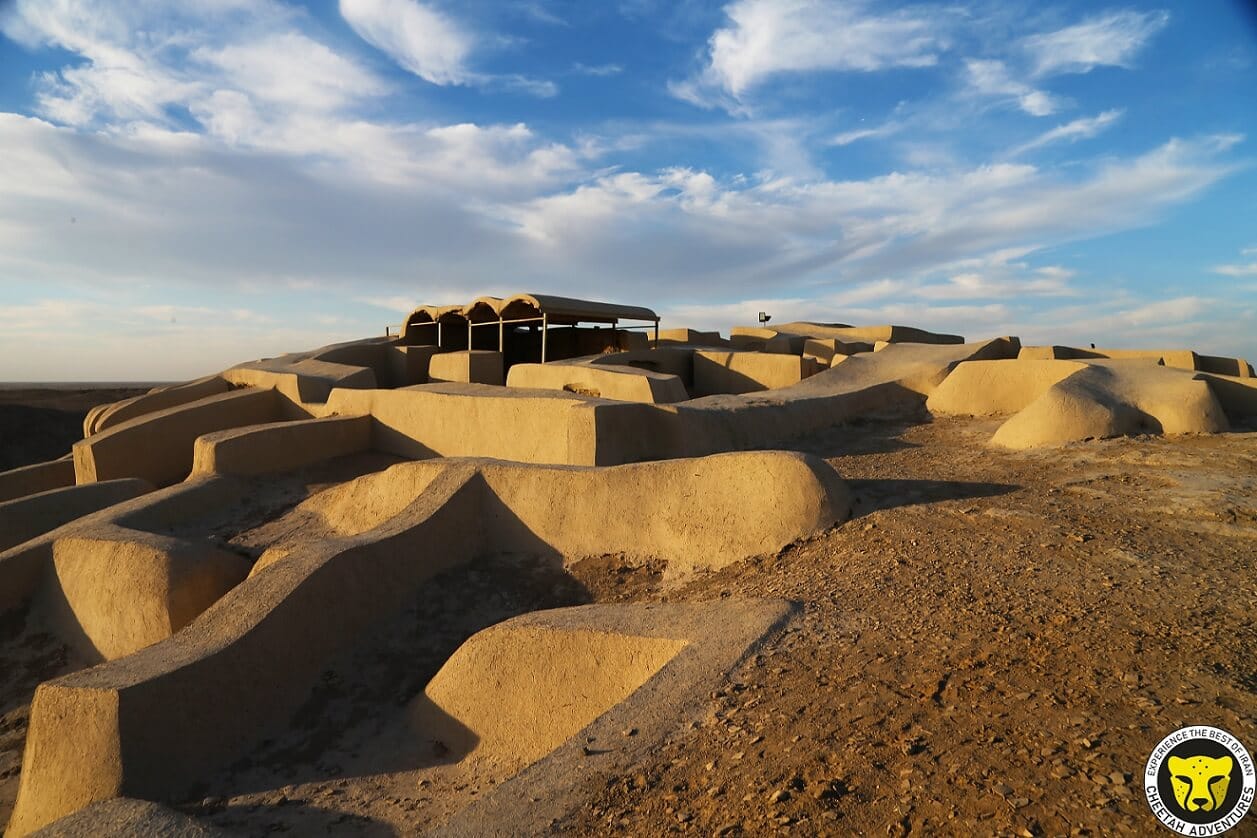
Shahr-i-Sokhta (Shahr-e Sukhteh), Sistan and Baluchistan
Sheikh Safi al-din Khanegah and Shrine Ensemble
Shiekh Safi-al Din was the eponym of the Safavid dynasty and a mystic in the 13th century. Sheikh Safi-al Din Khanegah and Shrine Ensemble was his home and a temple but later became a shrine. In addition to Sheikh Safi-al Din a few other noblemen such as king Ismail, are also buried in this shrine.
This UNESCO world heritage site is the paradigm of Islamic architecture in the middle ages and is the most significant monument in Ardabil. Ghandil Khane and Chini Khane are two of the magnificent rooms of this complex that amaze the visitors with their staggering decorations.
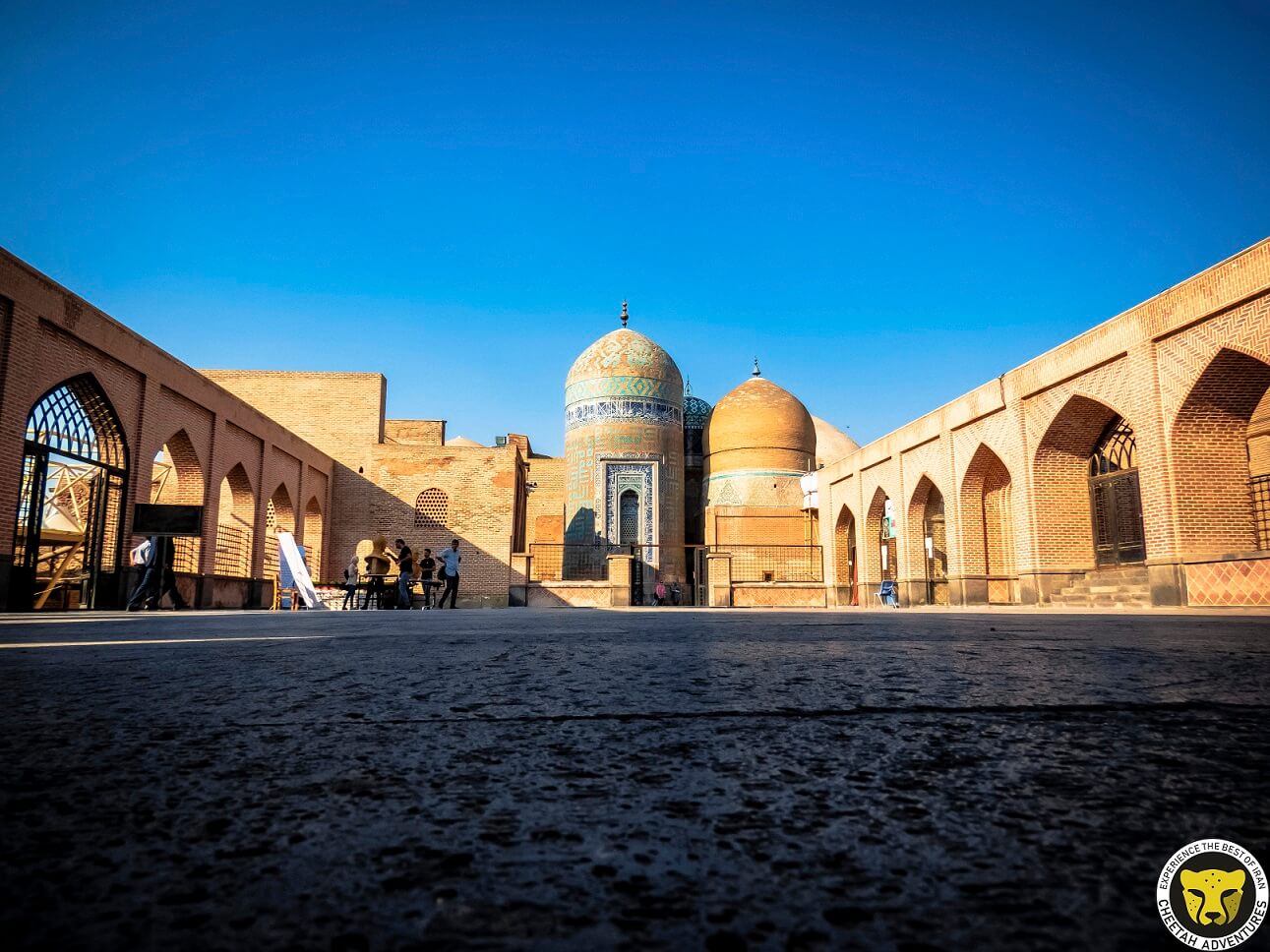
Sheikh Safi al-din Khanegah and Shrine Ensemble, Ardabil
Shushtar Historical Hydraulic System
The impressive Shushtar Historical Hydraulics system is the largest industrial complex built before the Industrial Revolution in the world. This heritage was built in the 5th century and consists of several canals, Qanats, watermills and etc. Shushtar Historical Hydraulic system is a masterpiece and the paradigm of creativity and intelligence of the Achaemenid people.

Shushtar Historical Hydraulic System, Khuzestan
Soltaniyeh (Soltanieh)
Located in a city with the same name, Soltaniyeh dates back to the 14th century. This monument is one of the most architecturally significant religious Iran attractions. It’s mostly known for its great dome which is the third-largest dome and the largest brick dome in the world. Soltaniyeh is also a great example of a new architecture style used at the time.
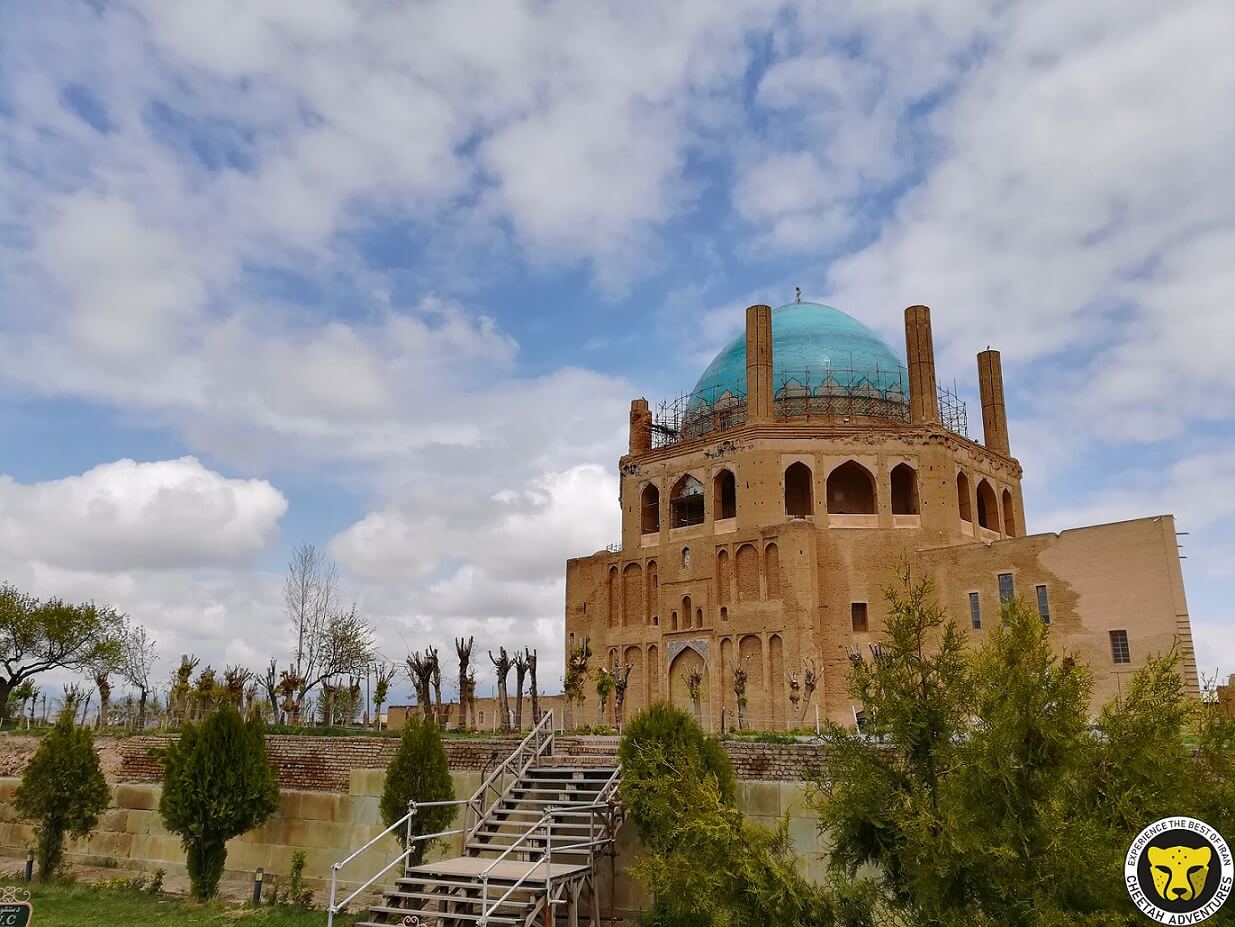
Soltaniyeh (Soltanieh), Zanjan
Susa
The ancient city of Susa is one of the oldest settlements in the world. It’s estimated to be formed around 4000 B.C; however, there are signs of civilization dating back as far as 7000 B.C. During its years of glory, Susa was the most important city in the world. It was the capital of Elam and remained an important city during the following centuries as well.
There are several monuments in the ruins of Susa including Tschonga Zanbil, the oldest temple in Iran.

Susa (Shush), Khuzestan
Tabriz Historic Bazaar Complex
The labyrinthine Tabriz bazaar is the largest roofed bazaar in the world and a UNESCO world heritage site. This magnificent bazaar dates back to the 10th century and has always been a crucial trading spot in Iran and Asia.
The current structure of the bazaar was built in 1814 after the old one was destroyed by an earthquake.
This vast bazaar also includes 29 mosques, 24 caravanserais, 5 museums, 4 schools, and 4 bathhouses. The importance of Tabriz Bazaar was increased due to being on the Silk Road and it became the most important trade center in the world in the 19thcentury. Nowadays Tabriz bazaar is still one of the main trade centers in Iran and Asia. Strolling around in this bazaar you can find all kinds of souvenirs especially the best type of carpet made in Tabriz.
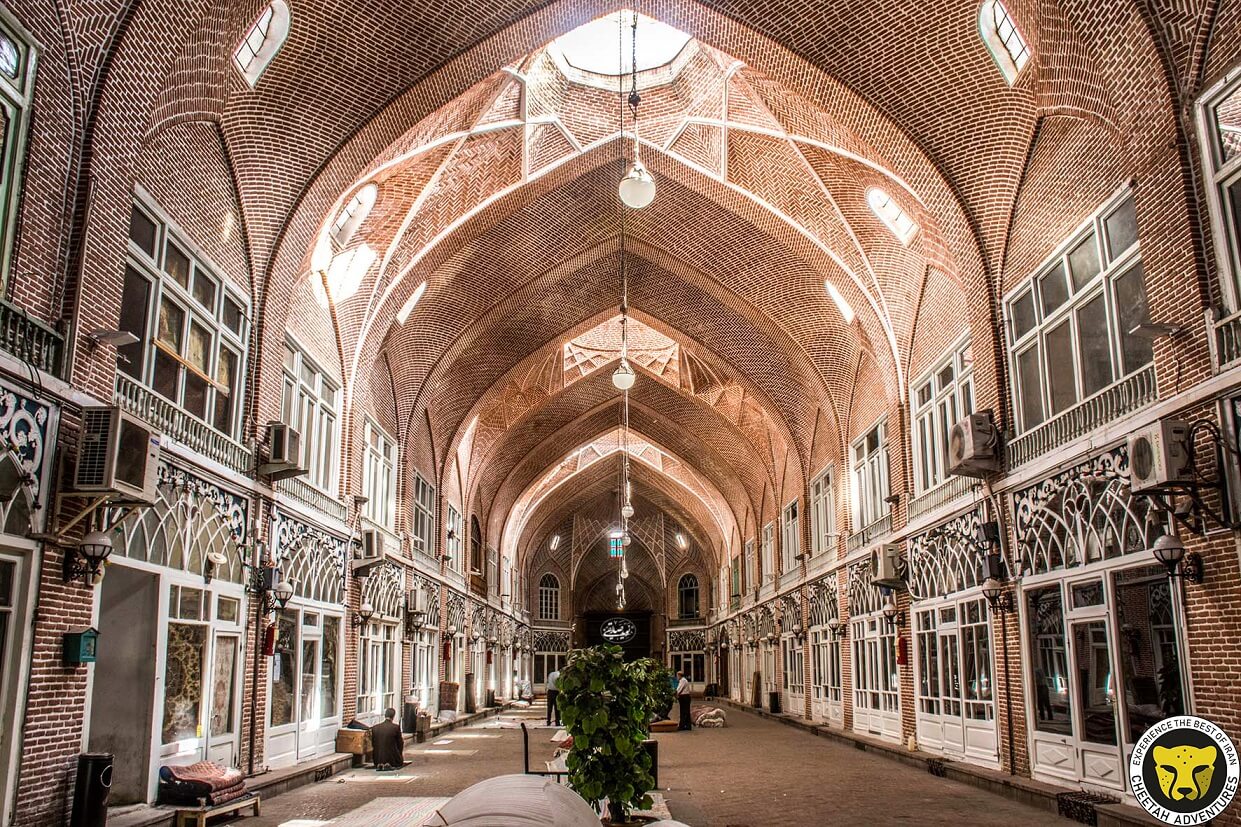
Tabriz Historic Bazaar Complex
Takht-e Soleyman
Takht-e Soleyman is an archeological site that dates back to almost 3000 years ago. It’s located in West Azerbaijan province and near the city of Takab. What makes Takht-e Soleyman more interesting is the many myths about it. Some of them tell tales of the lake in the middle of the city while others suggest that this ancient city is the birthplace of Zoroaster.
Takht-e Soleyman is also one of the most ancient archeological sites in Iran.
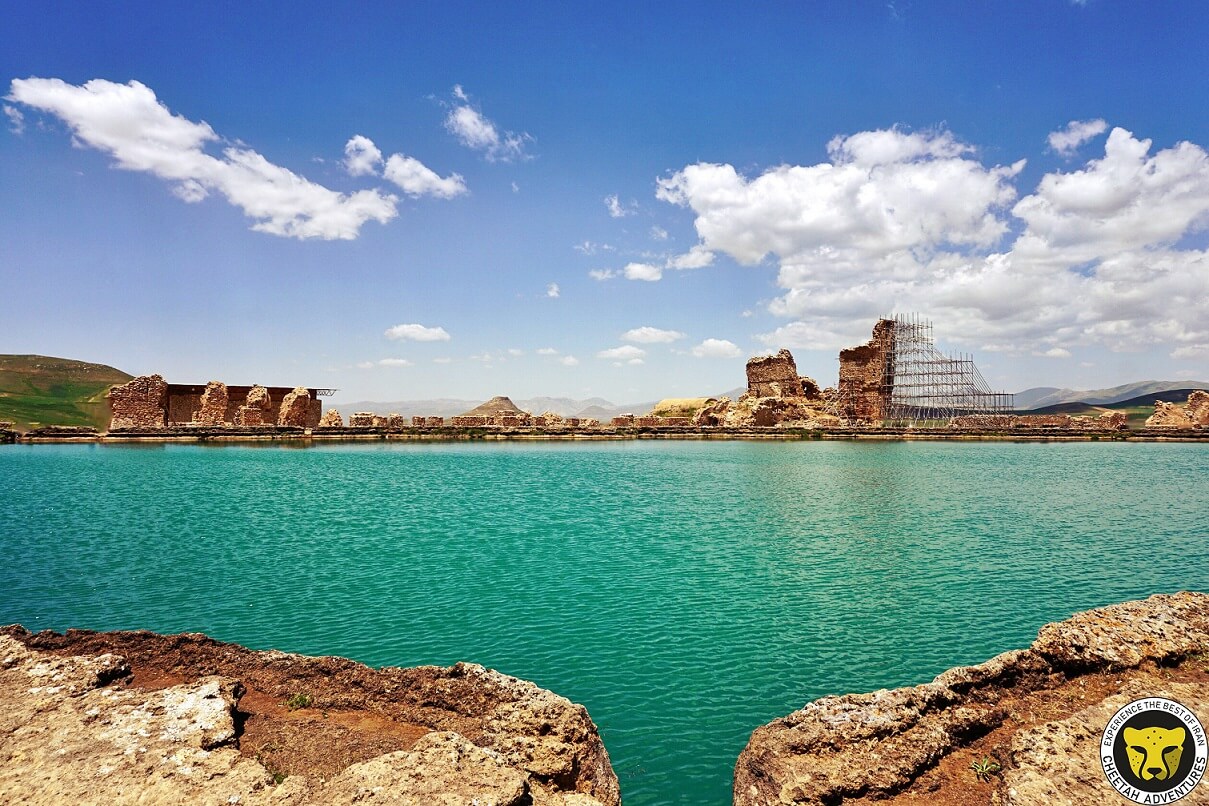
Takht-e Soleyman, Azerbaijan
Tchongha Zanbil (Tchogha Zanbil) (Chogha Zanbil)
Built-in 1200 B.C, Tchongha Zanbil is the oldest Iranian Temple (House of Worship). It served as a temple for Inshushinak, one of the major gods of the Elamites and protector of the city of Susa.
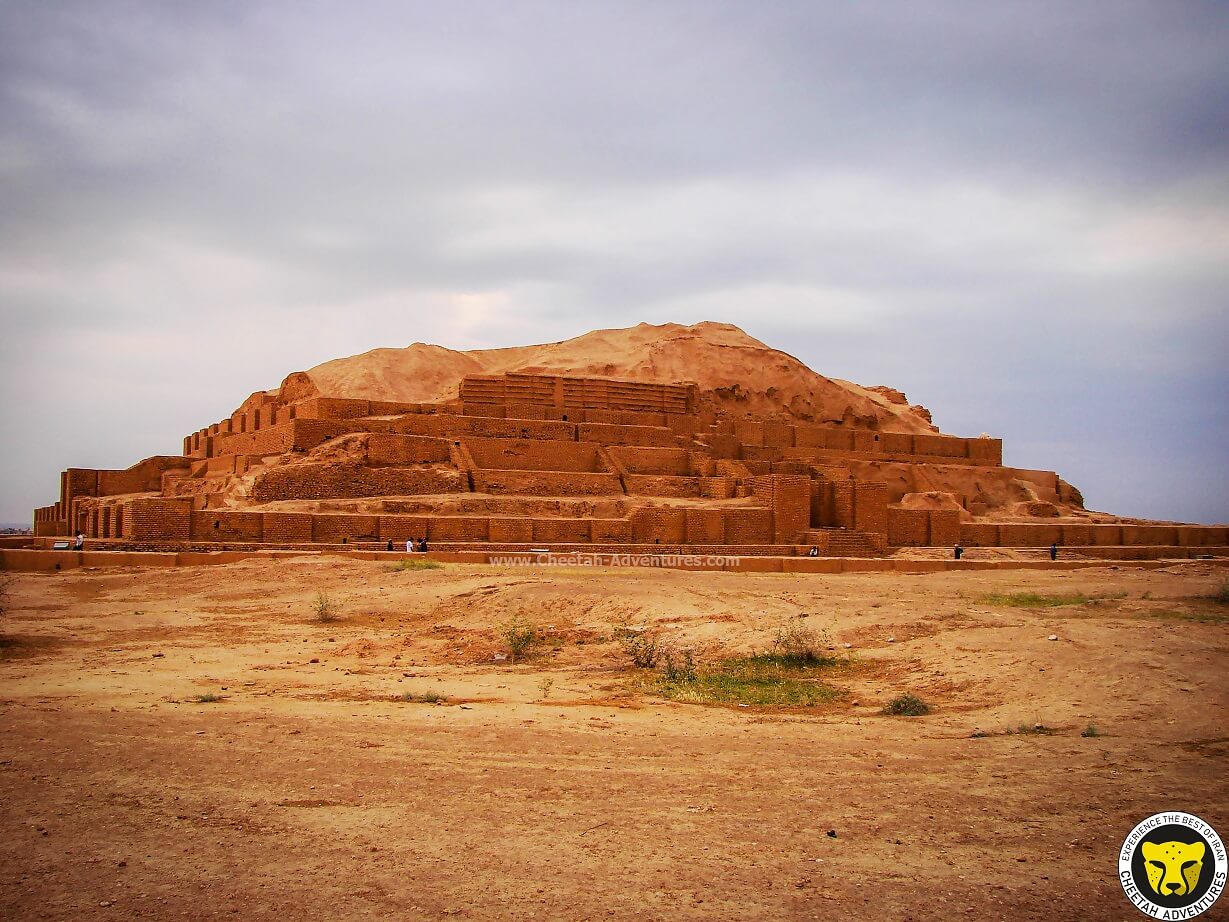
Tchogha Zanbil (Chogha Zanbil), Khuzesten
The Persian Garden
The Persian Garden is a typical garden design originating from thousands of years ago. The Iranian garden was most popular during the Safavid and Qajar eras. The main elements of a traditional Persian Garden are waterways, pools, Persian Qanats, and plants. There is also a small mansion at the end of the garden.
The ingenious and outstanding design of the Persian Garden has earned it the title of UNESCO World Heritage Site. Currently, 9 Persian Gardens in Iran are on the list which is: Pasargad Garden, Eram Garden, Chehel Sotoun, Fin Garden, Abbasabad Garden, Shahzdeh Mahan Garden, Pahlavanpour Garden, Akbarieh Garden, and Dolatabad Garden.

The Persian Garden, (Ghavam Garden, Shiraz)
The Persian Qanat
Qanat is a name given to a network of canals used to transmit underground water. Qanats are mainly used in regions with hot and dry climate, where water is sparse on the surface. The Persian Qanat refers to several perfectly designed Qanats in Iran. The spectacular design of Persian Qanats has made even the hottest regions in Iran suitable for living.
Using Qanats, people were able to bring water to houses and even use it to keep the house cool during the summer. There are 11 Persian Qanat networks registered as UNESCO World Heritage Sites: Qanats of Gonbad, Qanats of Baladeh Ferdows, Qanats of Bagh Zarch, Qanat of Mun, Qanats of Hassanabad, Qanat of Vazvan, Qanats of Goharriz, and Qanats of Ebrahimabad.
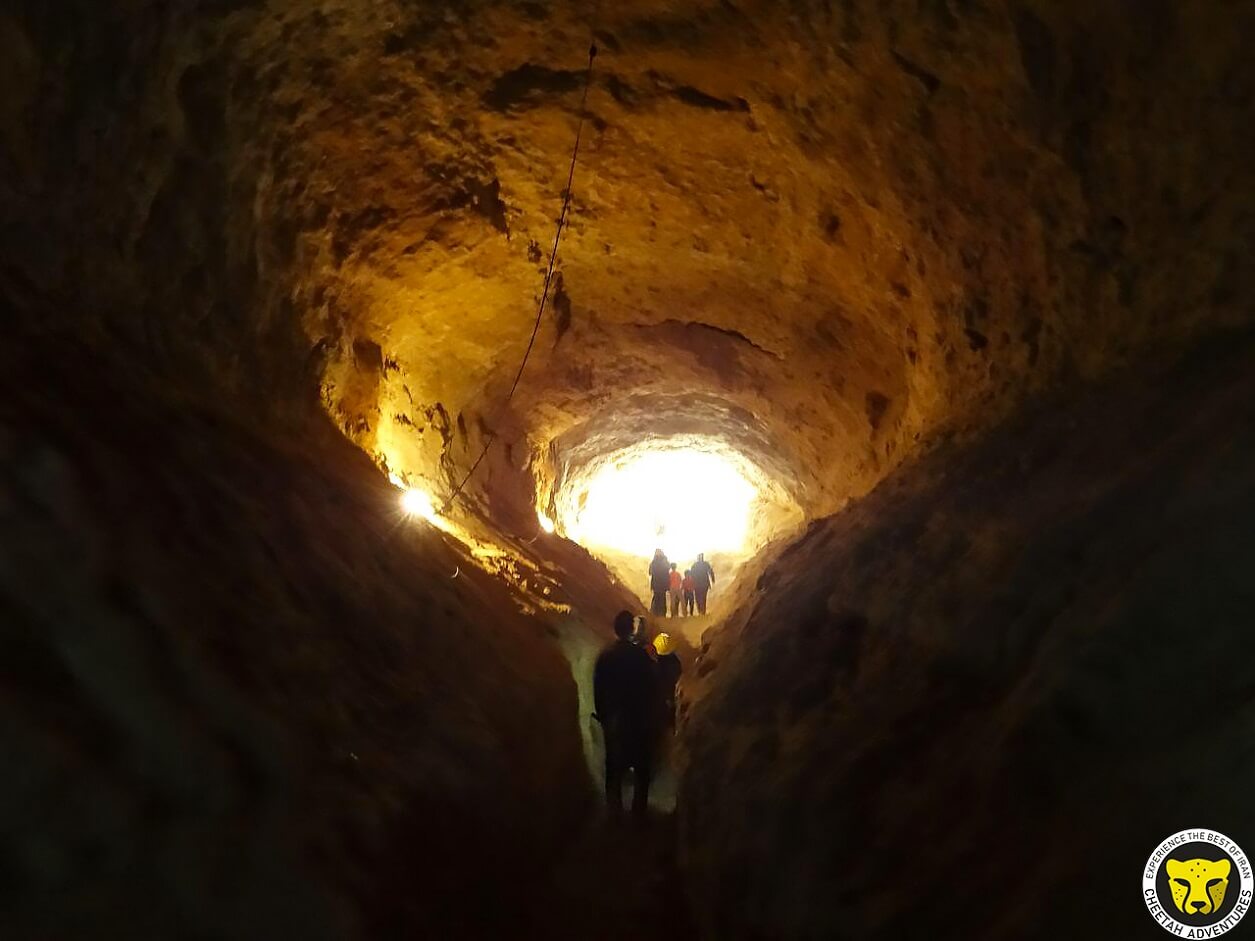
The Persian Qanat
Hyrcanian Forests
Caspian Hyrcanian Mixed Forests refers to an ecoregion that consists of lush forests near the shores of the Caspian Sea in Iran and Azerbaijan. These mesmerizing forests are among the oldest and most valuable forests worldwide.
Caspian Hyrcanian Mixed Forests are the natural habitat of 3200 plant species, 58 bird species, and 58 mammal species including the endangered Persian Leopard.

Hyrcanian Forests (Caspian Forests)
Lut Desert (Dasht-e Lut)
The Lut Desert is the largest desert in the world with an area of 51,800km. This vast desert fascinates its visitors with its magnificent gigantic Kalouts (Yardangs), tall sand dunes, and salt lakes. Lut Desert also holds the record of the hottest spot on earth with 70.7 degrees recorded at Gandom Beryan region. Read more about Iran Deserts.
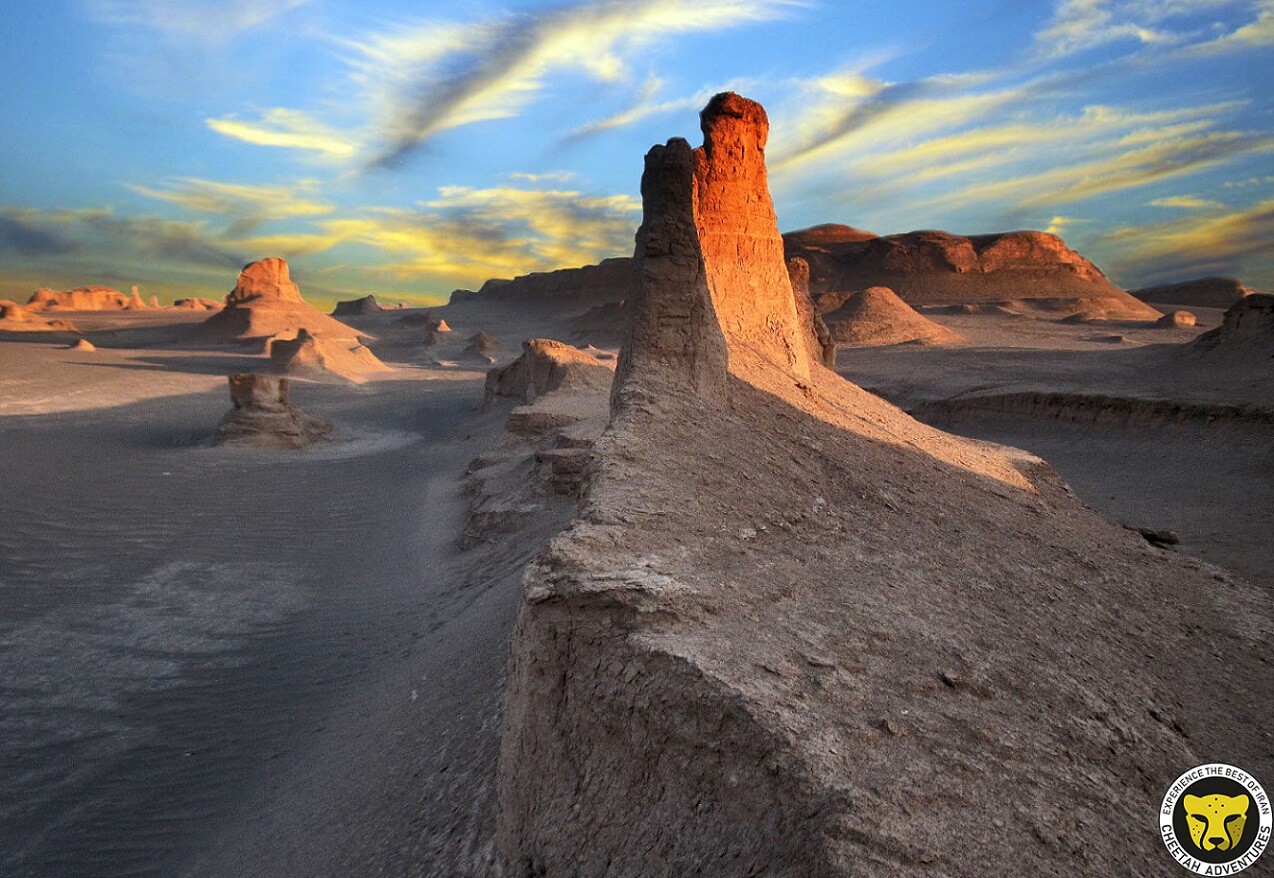
Lut Desert (Dasht-e Lut)
The trans-Iranian Railway
The Trans-Iranian Railway, almost 1400 kilometers long, possesses special significance not only due to its technique and quality of construction but also because it is a tourist attraction with wonderful natural views. UNESCO was conducive to globalizing its lovely natural sights, edifices, bridges, stations, and even historical locomotives as tourist attractions when it ratified the Railway as a Cultural Heritage in the year 2021.
At the time of its construction, there was much discourse and opposition regarding the need for a trans-Iranian Railway. A railway was a massive advancement for the country; however, many opposed it, since they saw it as the attempt of the enemy to wreak havoc and to facilitate the subjugation of Iran by other countries during the world war. The heritage of the Trans-Iranian Railway is representative of both sides of the political ideology of the time.
At the current time, one of the safest and most economical routes of travel in Iran is the railway. The railway passes through many different regions and offers a large range of prices and qualities. Access to Iran’s natural wonders along this route persuades many passengers to opt for this method of travel.
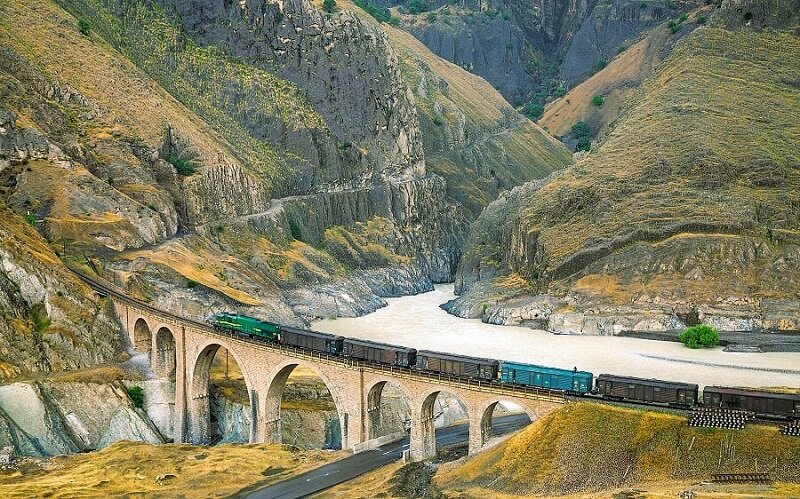
The trans-Iranian Railway
The Cultural Landscape of Uramanat and the Community’s Concord with Nature
Another Tangible Cultural Heritage of Iran, registered by UNESCO in the 44th session of the World Heritage Committee, is the Cultural Landscape of Hawraman or Cultural Landscape of Uramanat.
Uramanat or Hawraman is a historical region with a beautiful stair-like architecture that is located between Kermanshah and Kurdistan Province. The main aspects of the cultural landscape of Uramanat include the Zhaveh-Rood Valley (Darreh-ye Zhaveh-Rood), Uraman Takht, and Lohun. Overall, more than 700 hamlets reside within the Uramanat region, whose culture and origin have been very well preserved.
According to archeological finds, the settlements in this area date back to the era of Ancient Persia. There are fossils dating back to the Paleolithic age whose origin is Hajij Village in Uraman Takht; which is why this village is known as the oldest area of Uraman.
The 44th annual session of the World Heritage Committee of UNESCO was celebrated as an online event due to covid-19, during which Hawraman was granted the label of Tangible World Heritage on the fifth of Mordad.
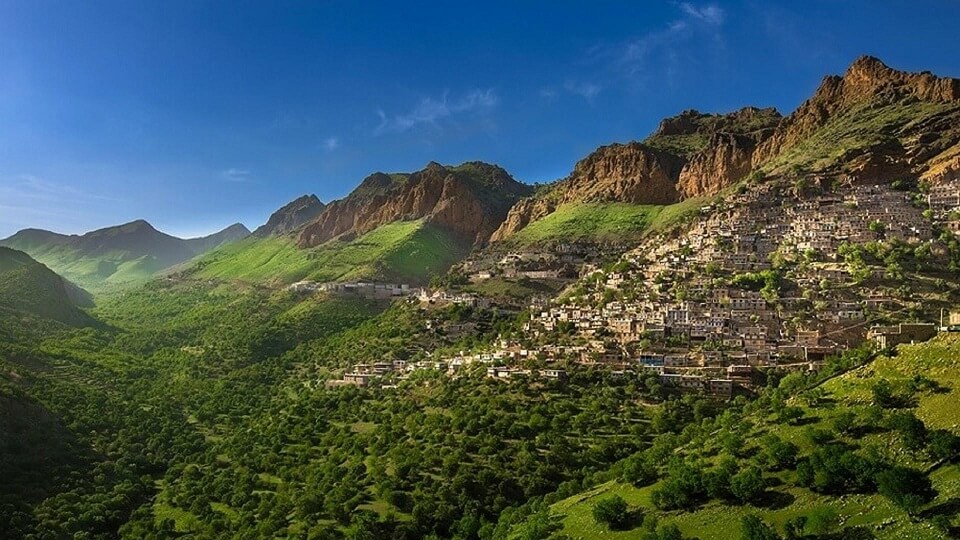
The Cultural Landscape of Uramanat and the Community’s Concord with Nature

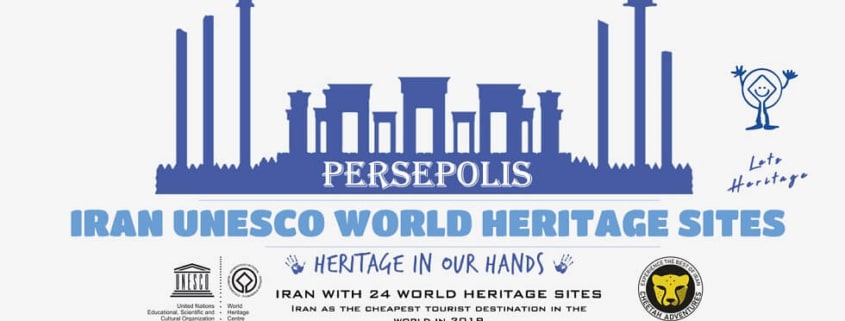



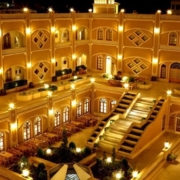




Leave a Reply
Want to join the discussion?Feel free to contribute!